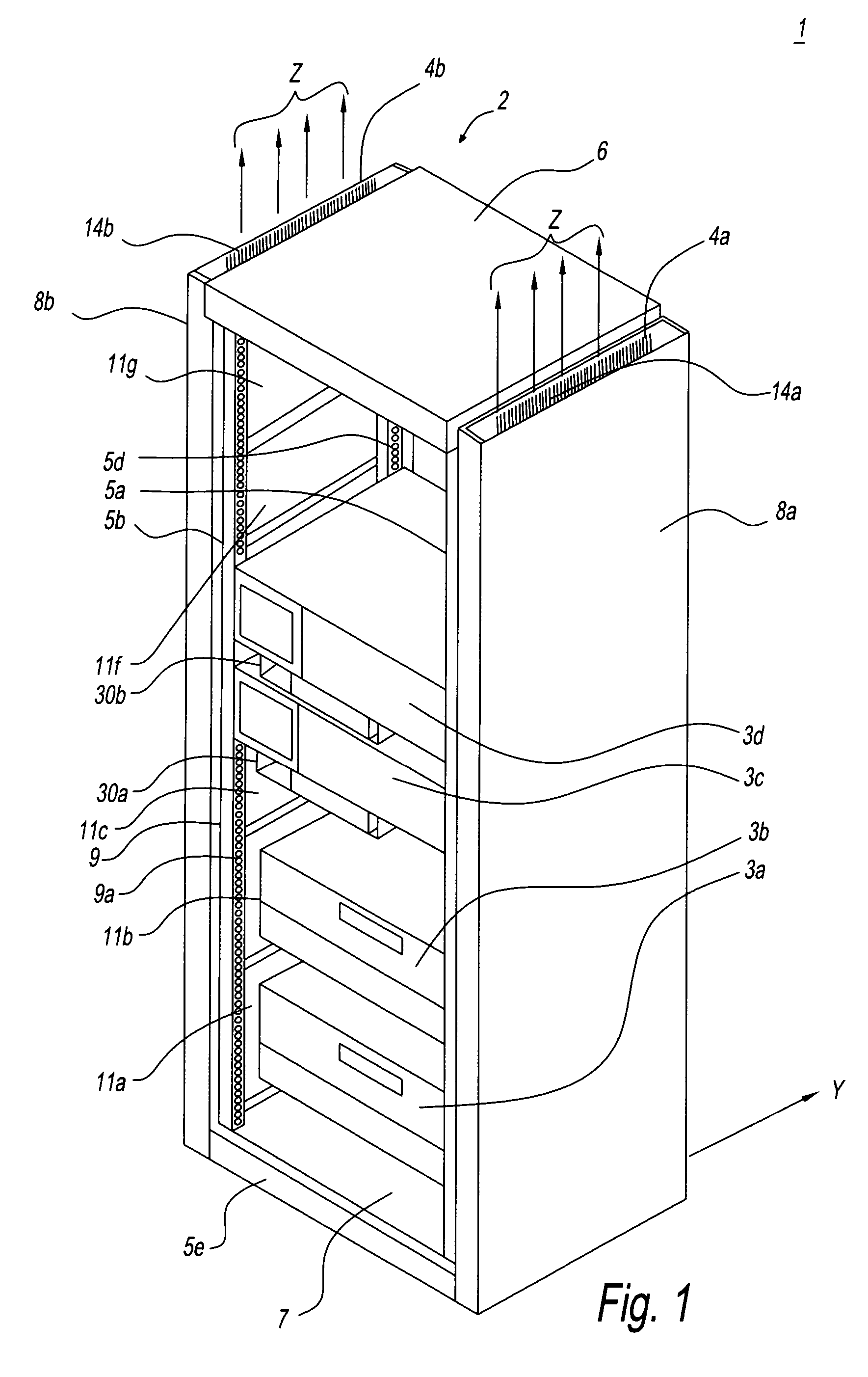Instrument rack with direct exhaustion
a technology of instrument racks and exhaustion pipes, applied in the field of racks, can solve the problems of affecting the appearance, and affecting the service life of the electronic componen
- Summary
- Abstract
- Description
- Claims
- Application Information
AI Technical Summary
Benefits of technology
Problems solved by technology
Method used
Image
Examples
Embodiment Construction
[0040]Embodiments of the present invention are described below while referring to the drawings. FIG. 1 is an oblique view showing the instrument rack of one embodiment of the present invention and shows the state where the electronic devices are mounted and the front door is removed to see inside. FIG. 2 is an oblique view showing the same instrument rack of one embodiment of the present invention in the same state as in FIG. 1, but it is a drawing seen from the back with the mounted electronic devices removed. The entire unit, including the electronic devices represented by symbol 1, in FIGS. 1 and 2 comprises the instrument rack (referred to below as the “rack”) having air ducts 4 and electronic devices 3.
[0041]Rack 2 in FIGS. 1 and 2 has support columns 5 (5a, 5b, 5c (not illustrated), 5d), top plate 6, base plate 7, and side covers 8 (8a, 8b), and preferably the entire unit is formed to meet standard dimensions. It should be noted that the side covers form the sides of air ducts...
PUM
 Login to View More
Login to View More Abstract
Description
Claims
Application Information
 Login to View More
Login to View More - R&D
- Intellectual Property
- Life Sciences
- Materials
- Tech Scout
- Unparalleled Data Quality
- Higher Quality Content
- 60% Fewer Hallucinations
Browse by: Latest US Patents, China's latest patents, Technical Efficacy Thesaurus, Application Domain, Technology Topic, Popular Technical Reports.
© 2025 PatSnap. All rights reserved.Legal|Privacy policy|Modern Slavery Act Transparency Statement|Sitemap|About US| Contact US: help@patsnap.com



